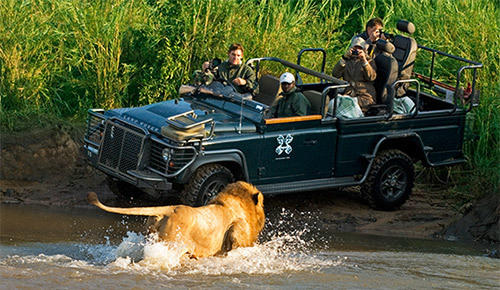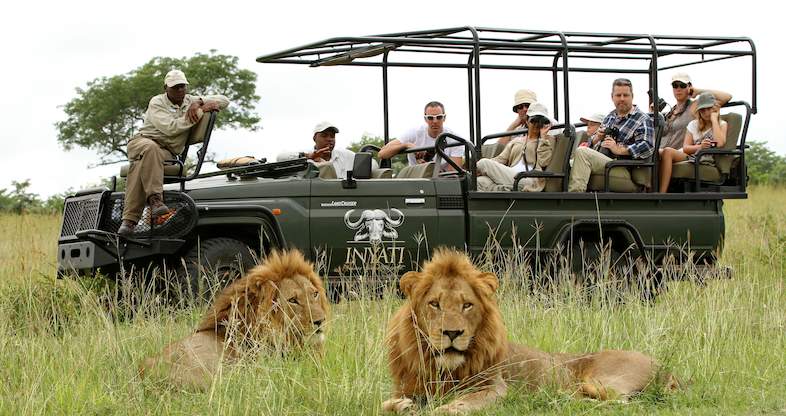Discover the Ultimate Wild Animals Encounters on Kruger Park Safaris
Exploring the Majestic Wild Animals and Scenic Landscapes of Kruger Park Safaris: A Memorable Experience Awaits
Kruger Park, a cornerstone of South Africa's natural heritage, offers an elaborate tapestry of wild animals and impressive landscapes, welcoming exploration and engagement with its varied environments. As visitors endeavor right into this extensive refuge, they run into not only the renowned Huge Five yet likewise a wealth of various other varieties that enhance the park's biodiversity. The juxtaposition of lavish forests and large savannas creates a vibrant backdrop for the safari experience. Nonetheless, comprehending the optimal time to see and the subtleties of safari etiquette can significantly boost one's journey. What insights wait for those that seek to browse this impressive wilderness?
Introduction of Kruger Park
Among South Africa's largest and most prominent game gets, Kruger National Park extends approximately 19,485 square kilometers in the northeastern region of the nation. Developed in 1898, it is a cornerstone of conservation initiatives, showcasing varied environments that consist of savannas, timberlands, and riverine forests. The park is home to a remarkable range of wildlife, with over 500 bird species and many animals, reptiles, and plants, making it a biodiversity hotspot.
Kruger National Park is separated into various regions, each offering special landscapes and environments, hence enhancing wild animals checking out possibilities. Site visitors can discover the park through self-drive routes or directed safaris, permitting an immersive experience in nature. The park's framework consists of well-maintained roads, rest camps, and outing areas, making sure accessibility for all sorts of travelers.
Furthermore, Kruger National Park plays a pivotal duty in education and study, contributing to global preservation efforts. The park's dedication to sustainable tourism advertises accountable wildlife viewing, fostering a deeper appreciation for South Africa's all-natural heritage. With its breathtaking scenery and abundant biodiversity, Kruger National forest continues to be a leading destination for adventure hunters and nature lovers alike.
The Huge Five Experience
Kruger National forest is renowned for using visitors the chance to run into the famous Huge Five, which consists of the lion, leopard, elephant, buffalo, and rhinoceros. This one-of-a-kind possibility to observe these majestic animals in their all-natural habitat attracts wildlife enthusiasts and journey applicants from around the globe.
The thrill of detecting the Huge 5 is not just regarding the animals themselves yet likewise the context of their environment. Each safari offers a new journey, as guides share insights into the actions, habitats, and preservation efforts bordering these types. The evasive leopard, usually seen resting in the trees, showcases the elegance of agility and stealth, while the enforcing elephant herd highlights the value of social frameworks within wild animals neighborhoods.

Additionally, encountering the formidable lion prides provides a peek into the elaborate characteristics of predator-prey relationships. The Cape buffalo, recognized for their uncertain nature, includes an aspect of enjoyment to any type of safari. The critically endangered rhinoceros serves as a poignant reminder of recurring preservation initiatives. This immersive experience cultivates a much deeper admiration for wild animals and highlights the significance of preserving these incredible creatures for future generations.
Breathtaking Landscapes and Ecosystems
Often celebrated for its impressive elegance, the landscapes of Kruger National Park offer a diverse tapestry of ecosystems that boost the safari experience. Covering nearly 2 million hectares, the park is home to a wide variety of habitats, consisting of savannahs, timberlands, wetlands, and rivers. Each ecosystem is distinctively interwoven, producing a dynamic atmosphere that supports a variety of flora and fauna.
The savannahs, identified by large meadows dotted with acacia and baobab trees, give optimal grazing grounds for herbivores like wildebeests and zebras. On the other hand, the dense woodlands and thickets offer sanctuary for killers and smaller sized species, cultivating a rich biodiversity. The park's waterholes and rivers are lifelines for wild animals, attracting a wide variety of pets, especially during the completely dry period.
This elaborate interaction of ecological communities not only supports the park's iconic wild animals yet likewise provides site visitors with spectacular vistas, from rolling levels to remarkable rough outcrops. Whether going across open savannahs or exploring dense bushveld, the beautiful landscapes of Kruger National forest promise to leave an indelible mark on every safari lover's heart.
Ideal Times to Visit
Understanding the very best times to visit Kruger National Park can substantially boost the safari experience. Kruger park check my blog safaris. The park experiences 2 key seasons: the dry cold weather from May to September and the damp summer season months from October to April. Each period supplies distinct benefits for wild animals viewing and landscape gratitude
During the dry season, animals congregate around water resources, making wildlife spotting more predictable. The vegetation thins out, providing clearer exposure for sightings of the Big Five and various other varieties. This duration is specifically popular among tourists as a result of the desirable problems for game drives and directed walks.
On the other hand, the wet period, characterized by rich landscapes and vivid plants, is excellent for birdwatching lovers. Kruger park safaris. Migratory birds are plentiful, and the park becomes a haven for various bird types. Additionally, this season notes the birth of several young pets, offering an opportunity to witness the interesting dynamics of wild animals communications
Ultimately, the most effective time to visit relies on personal preferences, whether one looks for the ease of wild animals sightings or the charm of a blooming ecosystem. No matter of the season, Kruger National forest promises an unforgettable adventure for all that venture into its wild welcome.
Safari Tips and Guidelines

When preparing your safari,Think about the time of year. The dry period, from May to September, generally supplies better wildlife viewing possibilities. Wear neutral shades to blend right into the atmosphere, and prevent showy or brilliant attire that may startle animals.
Pack basics such as binoculars, a camera, sun block, and insect repellent. Remaining hydrated is vital-- lug adequate water for your team. Furthermore, bear in mind the park's wild animals; observe from a range and never effort to feed or provoke pets, as this can change their all-natural habits.
Engage with experienced overviews, that supply indispensable understandings and improve your understanding of the ecosystem. Approach your safari with persistence and an open heart, permitting for spontaneous moments that will certainly create extraordinary memories in this amazing landscape.
Final Thought
In conclusion, Kruger Park uses an exceptional possibility to engage with diverse wild animals and impressive landscapes. The park's commitment to conservation and education enhances the safari experience, enabling visitors to appreciate the detailed equilibrium of ecosystems. Seeing the Large Five and checking out numerous surfaces fosters a deeper understanding of South Africa's natural heritage. With cautious preparation and adherence to standards, a journey in Kruger Park guarantees to be both enhancing and remarkable for all that embark on this journey.
Kruger Park, dig this a keystone of South Africa's all-natural heritage, uses a complex tapestry of wild animals and spectacular landscapes, inviting exploration and engagement with its varied ecological communities.Kruger National Park is separated into various regions, each offering distinct landscapes and environments, hence improving wildlife viewing possibilities. The park's waterholes and rivers are lifelines for wildlife, drawing in a huge selection of animals, especially throughout the dry season.
In addition, be conscious of the park's wild animals; observe from a distance and never ever attempt to feed or provoke pets, as this can alter their all-natural actions.
